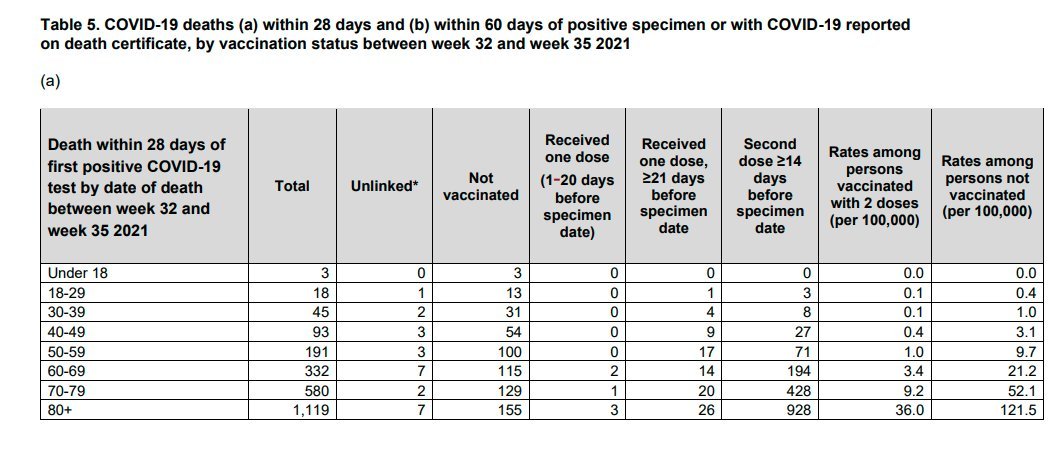
"The UK is currently experiencing high prevalence and likely entering a period of growth as a result of changes in behaviour.
"It is also a time of significant uncertainty given the scope for increased transmission after the end of the school holidays, the possibility for further evidence to emerge on the duration of immunity against COVID-19, and several policy areas likely to become clearer.
"Until uncertainties resolve and changes in transmission are fully reflected in data – likely in 3-4 weeks’ time - SPI-M-O’s medium-term scenarios can be used to consider the next couple of months. These suggest there is the /potential/ for another large wave of hospitalisations.
"While the relationship between cases and hospitalisations has changed due to vaccination, increasing cases remain the earliest warning sign that hospital admissions are likely to rise.
"It also remains the case that the earlier that interventions are brought in to curb growth, the lower prevalence is kept, reducing the direct COVID-19 burden and reducing the risk of needing more stringent measures to quickly reduce transmission.
"There is a clear consensus that continued high levels of homeworking has played a very important role in preventing sustained epidemic growth in recent months.
"It is highly likely that a significant decrease in homeworking in the next few months would result in a rapid increase in hospital admissions.
"If enacted early enough, a relatively light set of measures could be sufficient to curb sustained growth.
"During a period of sustained epidemic growth, however, the more stringent the measures introduced, the shorter the duration needed for the measures to be in place to reduce to a given prevalence.
"It is likely that the future trajectory of the epidemic may be some combination of the Step 4 Roadmap scenarios but with a delay of any peak, for example with peaks occurring in October to December instead of August to October.
(note - this is potentially not good as this means that the peak would coincide with hospital winter pressure)
"It will take a further three to four weeks for the full impacts of likely forthcoming changes in behaviour to be reflected in the data, such as the return of schools in England and any reduction in working from home
"With the current levels of high prevalence combined with unknown behaviours, the burden on health and care settings could rise very quickly.
"If acute COVID-19 combines with other pressures, such as Long COVID, other infectious diseases (influenza, RSV, norovirus, etc.), or co-infection of SARS-CoV-2 with other diseases increases morbidity, it could be a very difficult winter ahead.
*Not a forecast or prediction*
Red scenario highly unlikely - more likely if waning immunity or new variant of concern.
Green scenario much more possible
Range of R values not dissimilar for cases in Scotland in recent weeks
Red scenario highly unlikely - more likely if waning immunity or new variant of concern.
Green scenario much more possible
Range of R values not dissimilar for cases in Scotland in recent weeks

"The two scenarios of R = 1.1 and R = 1.5 attempt to provide an envelope which contains the likely epidemic trajectory over the next couple of months.
"Even in the R =1.1 scenario, a large number of COVID-19 hospital admissions (up to around 2,000 a day) in England for a potentially protracted period of time is projected.
(for context, here is the latest data on England hospitalizations. Sustained 2,000 admissions per day would be *bad*) 

"Due to the uncertainties already discussed, it is not possible to project more accurately or further into the future. If combined with other winter pressures or seasonal effects; this could lead to a difficult few months for the health and care sector.
"Hospital occupancy in England is currently around 6,200, which is only two and half doubling times away from the peak seen in January 2021 of 34,000.
"While the relationship between cases and hospitalisations has changed due to vaccination, increasing cases remain the earliest warning sign that hospital admissions are likely to rise.
"The age distribution of cases is very likely to change over the short-term with the return of children to schools and so the number of cases in older people is of particular importance.
"It remains the case that the earlier that interventions are brought in, the lower prevalence is kept, reducing the direct COVID-19 burden and reducing the risk of needing more stringent measures to quickly reduce transmission (and hence prevalence)
"There is a clear consensus that the continued high level of homeworking has played a very important role in preventing sustained epidemic growth in recent months.
"If enacted early enough, a relatively light set of measures could be likely be sufficient to curb sustained but slow growth.
"As well as encouraging home working, more light touch measures could include clear messaging that recommends people acting cautiously, more widespread testing, a return to requiring all contacts of cases to isolate, and more mask-wearing.
"As well as encouraging home working, more light touch measures could include clear messaging that recommends people acting cautiously, more widespread testing, a return to requiring all contacts of cases to isolate, and more mask-wearing.
"...During a period of sustained epidemic growth, the more stringent the measures introduced (or the more rapid the decline in the epidemic that could be achieved), the shorter the duration needed for the measures to be in place to reach a given prevalence.
• • •
Missing some Tweet in this thread? You can try to
force a refresh













